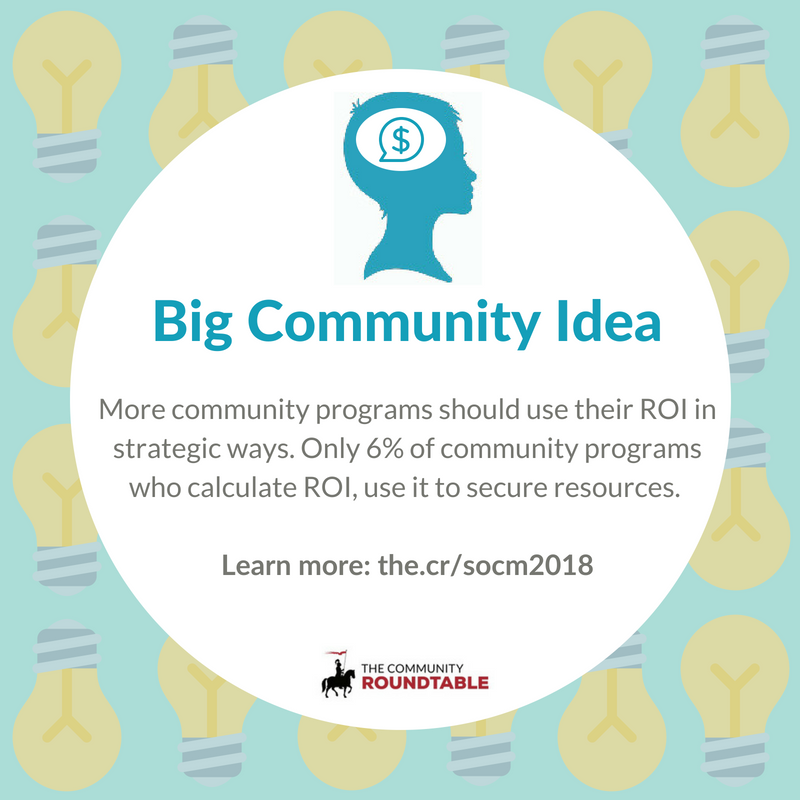
Only 6% of community programs who calculate ROI, use it to secure resources.
The SOCM 2018 data revealed that of the respondents who were calculating ROI and presenting it to various stakeholders, more than 50% were using it to defend their program or to increase confidence in it, instead of the more traditional uses like increased budgets, headcounts, change in roadmap priorities etc. To understand why this is a problem, consider…
Would ROI be used to make a function like HR defend its existence? Or would it be used to decide what additional investments to make/ask for in the department?
Almost any program/department that involves the terms loyalty, retention, engagement, motivation, learning etc. is by nature, a complex function. The decision to establish a community and give it resources to function is an investment driven by business research and experience that says community programs have a variety of positive outcomes for the organization and its stakeholders. ROI cannot capture a complex value easily.
From a functional perspective, having to defend a program means that the community manager may have to focus on activities that show short-term returns. Further using the ROI to defend programs can trigger comparisons where there are none. For example, using TheCR calculator on ROI the average number was 2374%. At first glance, the number seems unbelievable. It is…because the content value being generated by communities is so much higher than the investment being made in the community programs. This does not mean however that it can be compared to another initiative with an ROI of 300% since the specifics of the two programs may not be comparable.
ROI in its traditional form is a financial ratio to assess profitability and is calculated as total profits/total costs.
TheCR’s ROI formula for communities captures the extent and value of content creation activities and provides insight into the community activity and returns.
However, ROI in any form is just one part of an overall discussion on how the community is performing. There could be many other effectiveness indicators. As an example of how ROI is more appropriately used exists in the training field. A widely accepted training evaluation method is D. Kirkpatrick’s four levels of training evaluation (1959). The four levels are Reaction, Learning, Behavior, and Results. ROI is considered a part of Results and just one of the many indicators of results.
Using the other levels of evaluation in addition to ROI provide a much more accurate and comprehensive picture of the success of a training program. Similarly, in my opinion, the ROI should be just one of the indicators of the progress of a community program. Using it strategically to track progress, secure budgets, identify roadmap priorities are likely to yield better returns in the long term than using it to defend program existence or improve stakeholder confidence in programs.
For more details on how the ROI ratio is being used in community programs what impact it is having, and the importance of strategy, read our State of Community Management 2018 report.

